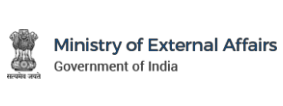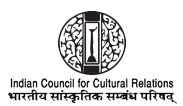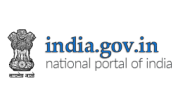Finance Minister Mr. P. Chidambaram's speech at the Harvard University South Asia Initiative The Harish C. Mahindra 2007 Lecture on "Poor Rich Countries: The Challenges of Development"
Boston
October 18, 2007
It is a pleasure to return to this great University, and I am glad that I am on the right side of the Charles River. I spent two of the happiest years of my life at the Harvard Business School which, of course, determined then which was the right side of the river. However, in order to buy insurance for the future, I crossed the river to what was then the wrong side to read economics under Professor Simon Kuznets. Now you know why some people regard me as a successful lawyer and a successful politician! My only regret is that I did not drop out of school because, if I had, there was a good chance that I would have become rich and I would have collected a degree without completing my graduate education!
2. Thank you for inviting me to deliver the Harsih C. Mahindra Lecture under the auspices of the South Asia Initiative of Harvard University. The title of my talk may appear intriguing, but I thought there is no place more suited to deliver a talk on this subject than a famous American University. The poor rich boy or poor rich girl is a familiar type in the United States. The child is rich because of its inheritance; the child is poor because of its situation.
3. Many developing nations are no different. Is India a rich country or a poor country? Recently, India celebrated sixty years of independence. India is a young nation, but an old civilization. The Indian civilization – or more accurately the Indus Valley civilization – is 5,000 years old. Extant Indian literature is 3,000 years old. We carry the burden of those years; at the same time we carry the rich inheritance of those years too.
4. India is a country rich in resources, both natural and human. Its continental expanse, virtually every agro-climatic zone, perennial and seasonal rivers, snow clad mountains, forests, a long coast line, a peninsula surrounded by three seas, two active monsoons, mineral resources and a fertile, alluvial soil constitute abundant natural resources. India’s human resources are even more abundant. Nearly one-half of the 1.1 billion people are below the age of 25 years. The size of the working age population exceeds the size of the dependent population and it is estimated that it will remain so until the year 2025 and, perhaps, even beyond until the year 2045. This is our demographic advantage.
5. Yet, India is regarded as a poor country. It is so, because a large proportion of the people are poor: according to the World Bank’s World Development Indicators, 33.5 per cent of the population lives on an income of less than US$ 1 a day. Income poverty is but one measure. Poverty can also be measured by the absence or inadequacy of schools, hospitals, roads, electricity, clean drinking water and sanitation. There are also other human development indicators which point to poverty such as the infant mortality rate, the maternal mortality rate, the proportion of underweight or anemic children, and the number afflicted by blindness or polio or other diseases.
6. Undoubtedly, India is challenged. The Government of India faces the challenge of leveraging the huge natural and human resources to ensure rapid economic growth. We believe that growth is the best antidote to poverty. With growth, we have a chance to wipe out the stigma of abject poverty, and our people can enjoy the advantages of being citizens of an increasingly prosperous country. Without growth, India will remain a poor rich nation.
7. For well over three decades after independence, India adopted a dirigiste model of economic development. The State was the principal driver of the economy and the economy itself remained closed to the rest of the world. In those thirty years, India’s GDP grew at an average rate of 3.5 per cent. I call those years the “lost decades”.
8. That model exacted a price. It also left a legacy that, to this day, remains a heavy burden. The socialist jargon had pervaded all walks of life and, especially, all economic activity. In the 1980s, first Indira Gandhi and, following her, Rajiv Gandhi made a brave effort to dismantle some pieces of the monstrous and rapacious structure that had been erected over the years. Rajiv Gandhi, in particular, challenged the people to think of the opportunities that lay ahead in the fields of information technology, communications, aviation, urban development, medicine and education. Politics stood in their way. Nevertheless, the new, though feeble, wind that was allowed to blow into the house lifted the annual growth rate to an average of 5.6 per cent in that decade.
9. It required a balance of payments crisis in 1991 to jolt India out of its slumber. The imminent threat of default on the country’s payment obligations – the equivalence of bankruptcy in the case of an individual – challenged the honour and pride of the people. The communist and socialist parties as well as the entrenched business houses put up fierce resistance to the changes made by the new government. Brushing aside the predictions of doom, the people embraced the new paradigm of an open and competitive economy. The India story had begun. It is an unfolding saga and we have added many chapters, but it was not easy in the 1990s and it is not easy now either.
10. The first decade of the new millennium has been the best since independence. In the seven years beginning 2000-01, India’s GDP has grown at an average rate of 6.9 per cent. Since 2003-04, the growth rate has moved to a higher plane and the average has been 8.6 per cent. 2006-07 was a splendid year with the GDP recording a growth of 9.4 per cent. One would have thought that the challenge of development – in a democracy – will become less formidable as the economy cruises on a high growth path. The reality is the opposite. Democracy – rather, the institutions of democracy – and the legacy of the socialist era have actually added to the challenge of development.
11. Let me explain with some examples. India’s mineral resources include coal—the fourth largest reserves in the world—iron ore, manganese, mica, bauxite, titanium ore, chromite, diamonds, natural gas, petroleum, and limestone. Commonsense tells us that we should mine these resources quickly and efficiently. That requires huge capital, efficient organizations and a policy environment that will allow market forces to operate. None of these factors is present today in the mining sector. The laws in this behalf are outdated and Parliament has been able to only tinker at the margins. Our efforts to attract private investment in prospecting and mining have, by and large, failed. Meanwhile, the sector remains virtually captive in the hands of the State governments. Opposing any change in the status quo are groups that espouse -- quite legitimately -- the cause of the forests or the environment or the tribal population. There are also political parties that regard mining as a natural monopoly of the State and have ideological objections to the entry of the private sector. They garner support from the established trade unions. Behind the unions – either known or unknown to them – stand the trading mafia. The result: actual investment is low, the mining sector grows at a tardy pace and it acts as a drag on the economy.
12. I shall give you another example. Vast extent of land is required for locating industries. Mineral-based industries such as steel and aluminium require large tracts of land for mining, processing and production. Infrastructure projects like airports, seaports, dams and power stations need very large extents of land so that they can provide road and rail connectivity and the ancillary and support facilities. Hitherto, land was acquired by the governments in exercise of the power of eminent domain. The only issue was payment of adequate compensation. That situation has changed. There are new stakeholders in every project, and their claims have to be recognized. We are now obliged to address issues such as environmental impact assessment, justification for compulsory acquisition, right compensation, solatium, rehabilitation and resettlement of the displaced persons, alternative house sites and farm land, and one job for each affected family. Each issue is complex and, in some cases, may take months to be resolved. Take the matter of right compensation: what is the right price? Should the price of the land be based on its present use or the use to which the land will be put? Should the compensation be paid as a lump sum or should it be an annuity or should the affected person be paid compensation partly in cash and partly through equity in the proposed project? In recent months, we have witnessed violent protests in many parts of the country when land was sought to be purchased or compulsorily acquired. After a long debate, we have just adopted a new policy on compensation, rehabilitation and resettlement. The policy will be translated into law. Despite progress in this behalf, I have asked myself whether it would be possible in India to start and complete a project like the Three Gorges dam, and my conclusion is that it would not be possible.
13. The challenge on the human development front is equally daunting. We have some of the best schools in the world -- but they are few – and we have some of the worst schools in the world. The challenges that we face include enrolment in school of all children between the ages of five and ten, retaining them in school for at least five years, appointing a sufficient number of teachers, dealing with teacher absenteeism, and equipping the schools with books and teaching material so that the child experiences the joy of learning. Many schools, including government-run schools, do make the mark, and that is why we turn out every year hundreds of thousands of qualified engineers, doctors, accountants, managers and other professionals. Nevertheless, it is becoming increasingly clear that we are not doing enough. Too many children are still out of school, too many drop out before they finish school, too many cannot read or write or do basic math, and too many are ill-equipped to be employed. At the other end, we produce too few teachers, professors, researchers and scientists. Even in the professions, we have too few doctors, nurses, engineers and judges for a population of over a billion and an economy that is growing at a rapid rate. The reasons are obvious: the early development models that we inherited are simply incompatible with the demands of a globalizing economy. Besides, there is the inherited and widely-held belief that education is, and must be, a not-for-profit activity, despite overwhelming evidence that our reluctance to adopt new models has spawned a huge industry that has fully commercialized education and imparts education without any values.
14. Education – apart from healthcare -- is our most formidable challenge. The failure to rise to this challenge and overcome it will affect precisely those sections of the people who have been victims of neglect for many centuries. These are women, the scheduled castes and scheduled tribes, and many socially backward communities that have remained at the bottom of the pyramid. We now have a policy that promises “education for all”. We have backed the promise by increasing manifold the funds provided by the federal government for building schools, purchasing equipment, appointing teachers and providing a cooked meal for all children in primary and upper primary classes.
15. Another challenge is vocational and technical education. Many children, when they grow up, are forced to remain dependent on agriculture although it is clear that the structure of our agriculture cannot absorb any more farm workers. The average landholding in India is one hectare or about 2.2 acres. Besides, about 26 per cent of farm workers do not own or possess any farm land. Their children must be weaned from agriculture and equipped to take up off-farm and non-farm activities. Most students leaving school do so without any technical skills and are forced to acquire them on the job if they manage to find one. At present, only about 3 per cent of rural youth and 6 per cent of urban youth in the age group of 15 to 29 years receive any kind of formal vocational training. The goal is to increase the capacity for vocational training five-fold . What is also disturbing is that the demand and supply curves for technical education, even at the college degree level, do not cross. Many degree and diploma holders in engineering, for example, remain without jobs. The skills required by industry and the skills possessed by the graduating students are so different that many industries have been forced to re-train and re-educate the new recruits.
16. Providing health care is an even more daunting challenge. While there has been progress – especially the increase in life expectancy and the eradication of some endemic diseases – India’s low score on many human development indicators will give you a picture of the size of the problem. The infant mortality rate is 57 deaths per one thousand live births; the maternal mortality rate is 301 per one hundred thousand live births; the number of blind is 7 million; and diseases such as cholera, diarrhea and malaria are still widely prevalent. Urban India receives better health services than rural India. We have attempted to address the deficiencies in many ways. We have launched the National Rural Health Mission whose pivot is a trained health worker in every village. We have expanded the Integrated Child Development Scheme to cover all pre-school children. We have offered to the State governments a health insurance scheme and a death and disability insurance scheme that will be cost-free to the beneficiary. We also provide a modest pension to every old person below the poverty line.
17. In healthcare, mercifully, the old mindset that it must be a not-for-profit activity has changed. As a result, we have hospitals that have acquired a high reputation for the quality of their services, and patients from many countries are treated in these hospitals, giving rise to the quaint expression ‘medical tourism’.
18. To conclude, India is rich because of its natural resources; it is poor because it is unable to exploit those resources efficiently and profitably. India is rich because of its native entrepreneurial talent; it is poor because many policy and procedural hurdles stand in the way of the entrepreneurs. India is rich because of its young population; it is poor because it is unable to deliver quality education to all its children. India is rich because of its traditional systems of medicine and its capacity to adopt modern medicine; it is poor because of the weaknesses in the system to deliver basic medical services to rural India. India is rich because of its strengths in concept and design of programmes; it is poor because of lack of accountability and reluctance to punish the wrongdoers. India is rich because its people and its businesses save and invest; it is poor because of its obsession with outlays rather than outcomes. India is rich because its people set great store by values and moral standards; it is poor because of declining standards in public life. India is rich because its people are hardworking, resilient and pragmatic; it is poor because often commonsense is devoured by ideology.
19. Ladies and Gentlemen, that is the story of a poor rich country. Our effort is to turn India into an economic powerhouse and make India rich. More and more Indians – especially young Indians – have discovered the virtues of an open polity and an open economy. I have faith in that generation. While my generation which spearheaded the crossover will do its best, I have faith that the next generation of Indians, and the generation after that, will eliminate the scourge of poverty and make India rich. Then, the poor rich country would have deserved its inheritance.
20. Thank you for your warm reception, patience and courtesy.







